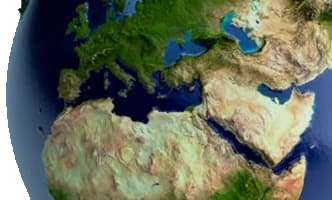The Annual Conference of the Parties to the United Nations Framework Convention on Climate Change (UNFCCC) and the Kyoto Protocol (COP20/CMP10) was held from 1-14 December 2014 in Lima, Peru.* During the Lima Conference three separate sessions were held: the 41st sessions of the Subsidiary Body for Scientific and Technological Advice (SBSTA 41) and the Subsidiary Body for Implementation (SBI 41), and the seventh part of the second session of the Ad Hoc Working Group on the Durban Platform for Enhanced Action (ADP 2-7).
The Lima Climate Change Conference was attended by a wide range of over 11,000 participants, including government officials, representatives from UN bodies and agencies, intergovernmental organizations, civil society, non-governmental organizations, scientific community, academia and the media. Negotiations in Lima revolved around a number of overarching issues addressed by the Ad Hoc Working Group on the Durban Platform for Enhanced Action (ADP) responsible for developing a new comprehensive climate agreement to be adopted by the next year’s annual Conference in Paris (COP 21). These issues included: the assessment of the progress being made on the elaboration of the basic elements of a draft negotiating text for the new 2015 agreement; the scope of intended nationally determined contributions (INDCs); and the elaboration of the main information that countries are required to provide regarding the assessment of their INDCs along with the process through which such information should be submitted. After protracted negotiations on a draft decision for advancing the Durban Platform for Enhanced Action, COP 20 culminated in the adoption of the ‘Lima Call for Climate Action,’ which sets in motion the negotiations in the coming year towards a 2015 agreement, the process for submitting and reviewing INDCs, and enhancing pre-2020 ambition.
In addition, COP 20 delivered a package of 19 decisions (17 under the COP and two under the CMP). Of particular importance are those referring, inter alia, to the operationalization of the the Warsaw International Mechanism for Loss and Damage; the establishment of the the Lima Work Programme on Gender; the adoption of the Lima Ministerial Declaration on Education and Awareness Raising; the launch of the Non-State Actor Zone for Climate Action (NAZCA); and the creation of Lima Information Hub for REDD+.
Arriving in Peru, delegates were welcomed by a decidedly positive spirit. As COP 20/CMP 10 President Manuel Pulgar-Vidal observed in his opening speech, prior to the Lima Conference, the world had received a number of “good signals” from the UN Secretary-General’s Climate Summit, the initial resource mobilization of the Green Climate Fund (GCF), “historic” announcements by several major greenhouse gas emitting countries, including the EU, the US and China, as well as momentum generated from the IPCC’s Fifth Assessment Report. Discussions on elements for a draft negotiating text and on the draft decision advancing the Durban Platform were both underpinned by a number of broad political issues. These included the differentiation among countries, the role of the UNFCCC and the relationship of its principles and provisions with the future agreement, as well as the issue of the scope of INDCs.
In particular, on the issue of INDCs, industrialized countries held once again that INDCs should only address mitigation and that all countries should be obliged to submit a mitigation target. Developing countries, on the other hand, repeatedly cautioned against a “mitigation-centric” approach to INDCs and advocated for an all-encompassing approach, incorporating adaptation, finance and technology transfer contributions. As a compromise between these two views, the Lima Call for Climate Action invites parties to “consider including” an adaptation component in their INDCs, which reflects a broad agreement that adaptation action requires strengthening alongside mitigation. It is also worth noting that the Outcome Document leaves the leeway for a re-interpretation of the meaning of the established differentiation based on the Common but Differentiated Responsibility (CBDR). As the Outcome Document stipulates “the Conference of the Parties underscores its commitment to reaching an ambitious agreement in 2015 that reflects the principle of common but differentiated responsibilities and respective capabilities, in light of different national circumstances”.
In addition, it should be noted that COP 20 was generally expected to help strengthening INDCs as a main component of the Paris agreement by clarifying: i) what kind of additional information would countries need to submit alongside their INDCs, and ii) whether there would be an assessment phase for the submitted information before Paris. Finally, the Lima Call for Climate Action identifies -in an indicative way- “information that parties will provide when putting forward their contributions,”(e.x. quantifiable information, time frames, coverage, methodological assumptions, and a subjective evaluation of fairness and ambitiousness), As for the assessment procedure, the main outcome does not foresee an ex ante review procedure for individual INDCs in the run-up to COP21 , The decision text simply requests that the Secretariat publish the communicated INDCs on the UNFCCC website and prepare, by 1 November 2015, a synthesis report on their aggregate effect.
With regard to enhancing pre-2020 ambition (ADP workstream 2), the technical expert meetings (TEMs) emerged as an area where countries could find a common ground. Relating to the key question of how to carry work forward under workstream 2 beyond Paris, there was a broad agreement that the TEMs, which have created a technical and less political space for discussions around scaling up implementation, would be the proper vehicle. Discussions on long-term finance disappointed developing countries because there was no agreement on the thorny issue regarding the climate finance by developed countries of US$100 billion annually by 2020. On the contrary, the Contracting Parties managed to reach an agreement on the initial resource mobilization of the Green Climate Fund, which reached its target of US$10 billion, collecting a total of US$10.2 billion in pledges by the end of the Lima Conference from both Annex I and non-Annex I countries.
Notwithstanding these differences and given the positive “Lima Spirit” that persisted throughout the Conference, these developments may have succeeded in “raising the ceiling” of pre-2020 ambition, and thus rebuilding some of the confidence and trust for the tough year ahead. Many expected that momentum created by the political events of the previous months would contribute to an atmosphere of trust in Lima. These events included the Green Climate Fund initial capitalization, the EU’s announcement of its 2030 mitigation target and, in particular, the bilateral announcements by the US and China, on their respective mitigation targets for 2025 and 2030, as well as by the US and India, on expanded cooperation on climate change, including on phasing down HFCs. Despite the initial different expectations and widely diverging views of the participants the Lima Conference managed to strike a “delicate balance between very difficult issues” and laid “a solid foundation” for work towards Paris.
Note
* The international political response to climate change began with the adoption of the UNFCCC in 1992, which sets out a framework for action aimed at stabilizing atmospheric concentrations of greenhouse gases (GHGs) to avoid “dangerous anthropogenic interference with the climate system.” The Convention, which entered into force on 21 March 1994, now has 196 parties. In December 1997, delegates to the third session of the COP in Kyoto, Japan, agreed to a protocol to the UNFCCC that committed industrialized countries and countries in transition to a market economy to achieve emission reduction targets. These countries, known as Annex I parties under the UNFCCC, agreed to reduce their overall emissions of six GHGs by an average of 5% below 1990 levels in 2008-2012 (first commitment period), with specific targets varying from country to country. The Kyoto Protocol entered into force on 16 February 2005, and now has 192 parties.
Source: IISD Reporting Services
For further information:
http://climate-l.iisd.org/news/lima-call-for-climate-action-lays-foundation-for-2015-agreement-in-paris/#more-274298
http://www.iisd.ca/download/pdf/enb12619e.pdf
http://wupperinst.org/uploads/tx_wupperinst/lima-results.pdf
About the author

MEPIELAN Centre
MEPIELAN Centre is an international research, training and educational centre established by Professor Evangelos Raftopoulos at the Panteion University of Athens in 2008.
Before its establishment as a University Centre, MEPIELAN operated as a successful international research, training and informational programme (2002-2007) under the scientific direction of Professor Evangelos Raftopoulos and the aegis of the Panteion University of Athens, supported by the Mediterranean Action Plan/UNEP and the Greek Ministry of the Environment, Physical Planning and Public Works.
MEPIELAN Centre is an accredited UNEP/MAP PARTNER (since 2013), a Member of the Mediterranean Commission on Sustainable Development (MCSD) (since 2016), and a Member of the Steering Committee of the MCSD (since 2019).
On 22 May 2022, MEPIELAN Centre proceeded to the development of MEPIELAN as a Non- Profit Civil Organization (INGO) for the more effective and efficient advancement of its Goals and Missions and furtherance of its activities. MEPIELAN Centre as a Non- Profit Civil Organization (INGO) is registered in Greek Law (Hellenic Business Registry, Reg. No. 16477300100) in accordance with Laws 4072/2012 & 4919/2022 as applicable


